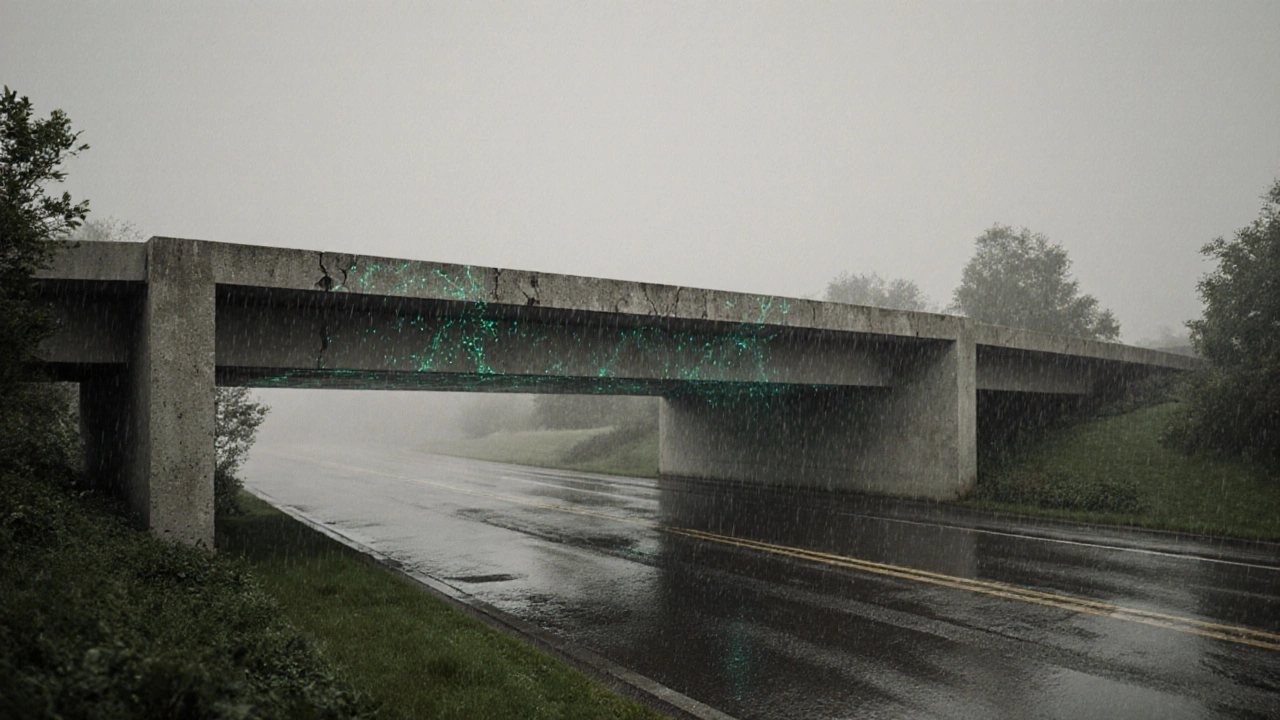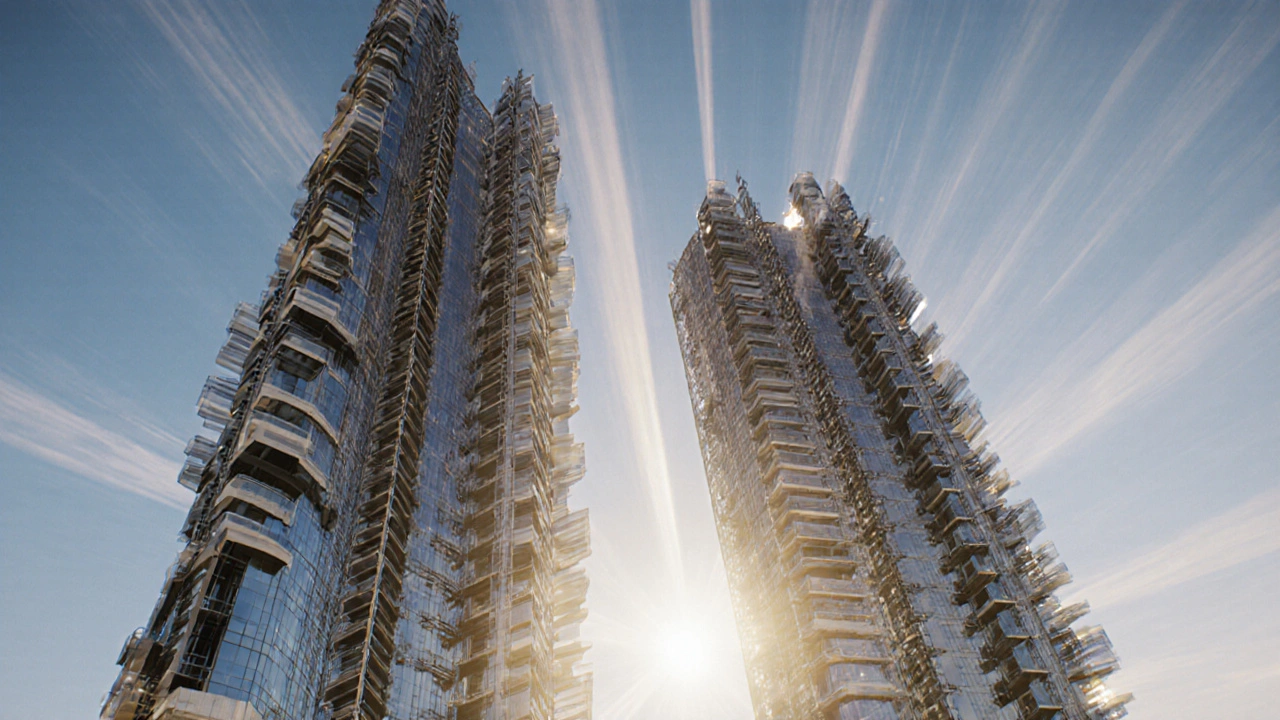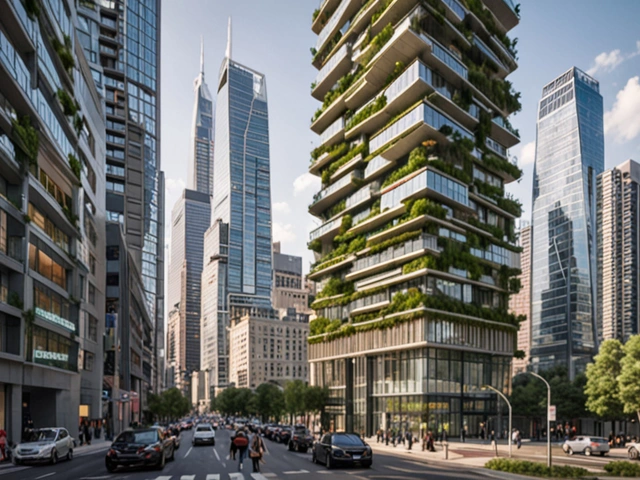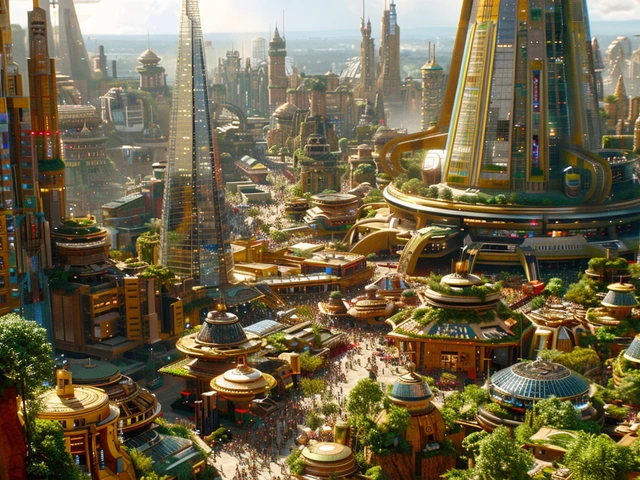High-Tech Building Energy Savings Calculator
Calculate Your Building's Energy Savings
Your Estimated Savings
Based on article data: High-tech buildings typically reduce energy use by 30-40% versus conventional designs
Example: The Edge in Amsterdam paid for its smart systems in under 10 years through energy savings
High-tech architecture isn’t just about shiny surfaces and steel beams. It’s about buildings that breathe, adapt, and respond-like living organisms made of glass, aluminum, and sensors. Since the 1970s, this style has moved beyond the iconic Pompidou Center to become the quiet force behind how we design cities today. You see it in office towers that adjust their shading based on sunlight, in hospitals that use airflow modeling to cut infection rates, and in schools where walls double as energy harvesters. This isn’t sci-fi fantasy. It’s happening right now, in real buildings, with real results.
What Makes Architecture ‘High-Tech’?
High-tech architecture doesn’t mean using the latest gadgets. It means making the building’s inner workings visible and functional. Think exposed ductwork, visible structural frames, and mechanical systems that aren’t hidden behind drywall-they’re part of the design. The Pompidou Center in Paris, completed in 1977, was the first to flip the script: instead of hiding pipes and elevators, it painted them bright colors and put them on the outside. It shocked people then. Now, it’s standard practice.
What sets high-tech apart from regular modern architecture is its obsession with performance. Every material choice, every joint, every ventilation duct is selected for how well it works-not just how it looks. A high-tech building doesn’t just sit there. It collects data, adjusts to weather, and even reconfigures itself. The Edge in Amsterdam, often called the smartest office building in the world, has over 30,000 sensors monitoring everything from occupancy to light levels. It uses that data to turn on lights only where people are, adjust temperature room by room, and even guide employees to open parking spots via an app.
The Rise of Parametric Design
One of the biggest shifts in high-tech architecture came with parametric design. This isn’t just fancy software-it’s a whole new way of thinking. Instead of drawing fixed shapes, architects set rules: ‘If wind speed increases by 10%, reduce window area by 15%’ or ‘If sunlight hits this wall after 2 p.m., activate shading.’ The software then generates hundreds of variations, optimizing for energy, cost, or comfort.
The Hearst Tower in New York uses parametric modeling to reduce its steel use by 20% compared to a conventional tower of the same size. Its diagrid structure isn’t just for looks-it’s mathematically engineered to handle wind loads more efficiently. Similarly, the Beijing National Stadium (the Bird’s Nest) wasn’t drawn by hand. Its complex steel lattice was generated by algorithms that balanced structural strength with material savings. The result? A landmark that uses less steel than a typical stadium of its scale, while looking like nothing else on Earth.
Responsive Facades and Dynamic Envelopes
Windows aren’t just openings anymore. In high-tech buildings, facades are active systems. The Al Bahr Towers in Abu Dhabi have a dynamic shading system made of 2,000 movable panels. Each panel opens and closes like a flower, following the sun’s path across the sky. The system cuts cooling costs by 20% and reduces glare inside. It’s not just efficient-it’s beautiful in motion.
At the Pixel Building in Melbourne, the facade isn’t just responsive-it’s self-cleaning. A special coating breaks down dirt when exposed to sunlight. Rainwater is collected and reused for irrigation. The building generates more energy than it uses. These aren’t gimmicks. They’re practical responses to rising energy prices and climate pressure.
Even smaller buildings are catching on. A new school in Denmark uses a facade made of translucent solar panels that let in diffuse light while generating electricity. Classrooms stay bright without blinds, and the school sells surplus power back to the grid. This isn’t the future. It’s what’s being built today.

Structural Expressionism: Beauty in Function
High-tech architecture doesn’t hide how things work-it celebrates it. The Lloyd’s Building in London, completed in 1986, has elevators, stairs, and plumbing on the outside. Why? So the interior stays open, flexible, and uncluttered. The building’s service towers are wrapped in glass and steel, turning maintenance access into a visual feature. It looks like a spaceship, but it’s designed for practicality: technicians can reach any pipe without tearing into walls.
Similarly, the Hong Kong Shanghai Bank Headquarters, designed by Norman Foster, uses a central spine to support the entire structure. This freed up the floor plan, allowing for 360-degree views and open workspaces. The building’s steel exoskeleton isn’t decorative-it’s what holds everything up. That’s structural expressionism: form follows function, and function is visible.
These buildings prove that efficiency and beauty aren’t opposites. They’re two sides of the same coin. A high-tech building doesn’t sacrifice aesthetics for performance-it elevates both.
Smart Materials and Self-Healing Systems
Concrete doesn’t have to crack. Steel doesn’t have to rust. New materials are changing how buildings age. Self-healing concrete, now used in bridges in the Netherlands and tunnels in Japan, contains bacteria that activate when water enters a crack. The bacteria produce limestone, sealing the damage automatically. Maintenance costs drop by up to 40% over 20 years.
Photocatalytic coatings, applied to facades in Tokyo and Milan, break down air pollutants when exposed to sunlight. One building in Milan uses this coating to neutralize the equivalent of 3,000 cars’ worth of emissions every year. That’s not just architecture-it’s environmental remediation.
Even glass is getting smarter. Electrochromic glass, used in the Salesforce Tower in San Francisco, changes opacity with a small electric current. On sunny days, it darkens to block heat. At night, it clears for views. No blinds. No curtains. Just clean, automated control.

Why This Matters for the Future
Climate change isn’t a distant threat-it’s a construction code now. Cities are under pressure to cut emissions, reduce energy use, and adapt to extreme weather. High-tech architecture isn’t optional anymore. It’s the only way to build sustainably at scale.
Traditional buildings waste 30-40% of their energy on heating, cooling, and lighting. High-tech buildings cut that to under 10%. The Bullitt Center in Seattle, called the greenest commercial building on Earth, generates all its power from rooftop solar, treats its own wastewater, and uses 80% less energy than a typical office building. It’s not a lab experiment. It’s a functioning office with 250 employees.
And it’s not just about energy. High-tech design improves health. Buildings with natural ventilation and daylight optimization reduce sick days by up to 25%, according to studies from the Harvard T.H. Chan School of Public Health. Workers in well-lit, temperature-controlled environments make fewer errors and report higher satisfaction.
The future of building design isn’t about bigger or taller. It’s about smarter, more responsive, and more alive. The buildings of tomorrow won’t just shelter us-they’ll interact with us, learn from us, and help us live better.
What’s Next?
Right now, researchers are testing buildings that grow. Yes, you read that right. Projects like the Living Building Challenge are exploring how mycelium (fungus roots) can be grown into structural panels. Others are embedding algae into façades to absorb CO2 and produce biofuel. These aren’t lab curiosities-they’re being piloted in Germany and Singapore.
AI is also stepping in. Generative design tools can now simulate thousands of building layouts in minutes, predicting how each will perform under heatwaves, storms, or high occupancy. Architects are no longer just designers-they’re data analysts, systems engineers, and environmental strategists.
The next decade will see high-tech architecture move from luxury towers to affordable housing. Modular, sensor-rich units are already being tested in social housing projects in Finland and Canada. These homes adjust heating based on occupancy patterns, alert residents to air quality issues, and even predict when appliances need repair.
This is the real promise of high-tech architecture: it’s not just for the rich or the iconic. It’s for everyone. The future of building design isn’t about spectacle. It’s about resilience, efficiency, and dignity.
Is high-tech architecture expensive?
Yes, upfront costs can be 10-20% higher than conventional buildings due to advanced materials and integrated systems. But over time, energy savings, reduced maintenance, and longer lifespan often offset the initial investment. The Edge in Amsterdam, for example, pays for its smart systems in under 10 years through energy and operational savings.
Can high-tech architecture be used in residential homes?
Absolutely. Smart windows, self-regulating HVAC systems, and energy-generating roofs are now available for homes. Companies like Tesla and Sunrun offer integrated solar and battery systems that function like high-tech building envelopes. Even small upgrades-like responsive shading or air-quality sensors-can bring high-tech benefits to a single-family home.
How is high-tech architecture different from sustainable architecture?
Sustainable architecture focuses on reducing environmental impact-using recycled materials, minimizing waste, and lowering carbon footprints. High-tech architecture adds another layer: active performance. It doesn’t just use less energy-it responds to conditions in real time. A high-tech building might generate its own power, adjust its shape for weather, and monitor indoor air quality continuously. Sustainability is a goal. High-tech is the method.
Are high-tech buildings harder to maintain?
Not necessarily. While they have more moving parts, they also have more monitoring. Sensors detect issues before they become problems. A broken HVAC component in a traditional building might go unnoticed for weeks. In a high-tech building, an alert goes out the moment performance drops. Maintenance becomes predictive, not reactive-often reducing long-term repair costs.
What’s the biggest challenge facing high-tech architecture today?
The biggest challenge isn’t technology-it’s regulation. Most building codes were written for static structures, not dynamic ones. Permitting a building with movable panels or AI-controlled systems can take years because inspectors don’t know how to evaluate them. Change is coming, but slowly. Architects are now working with city planners to update codes so innovation isn’t blocked by bureaucracy.





